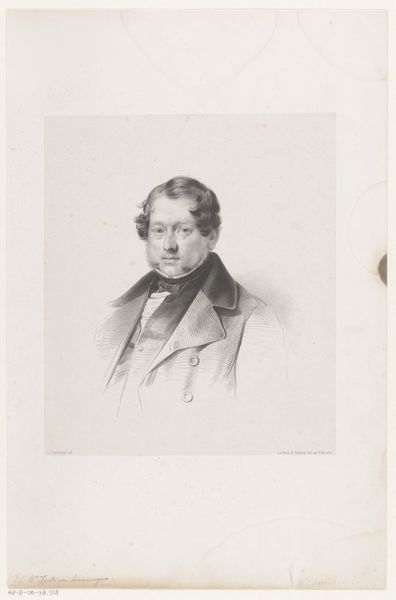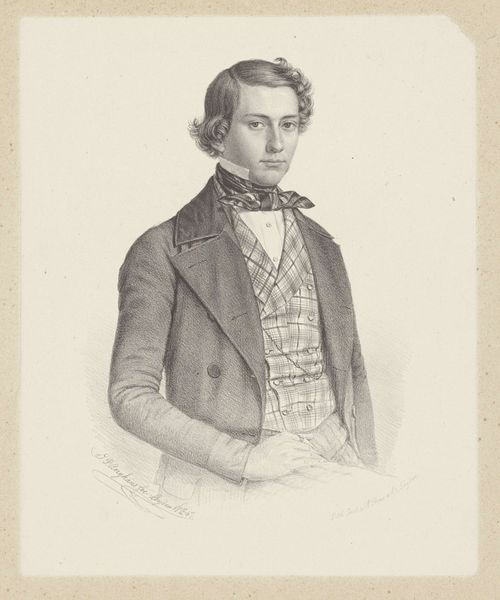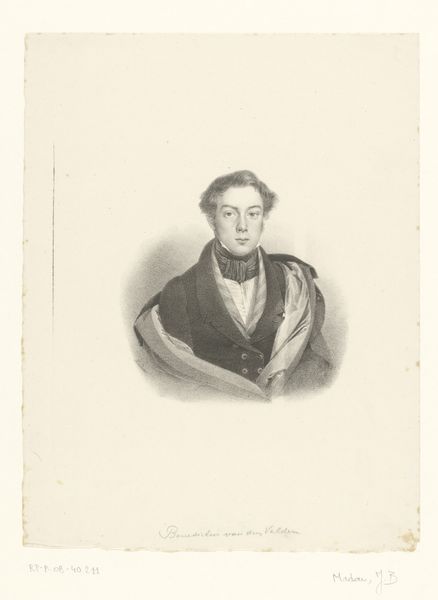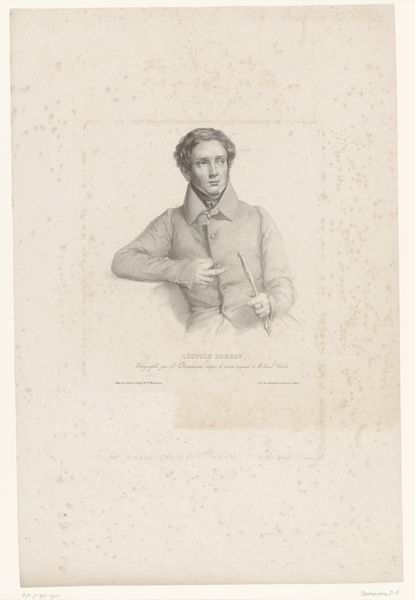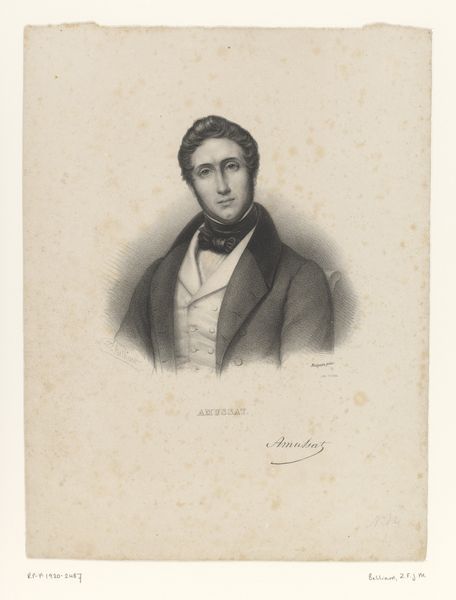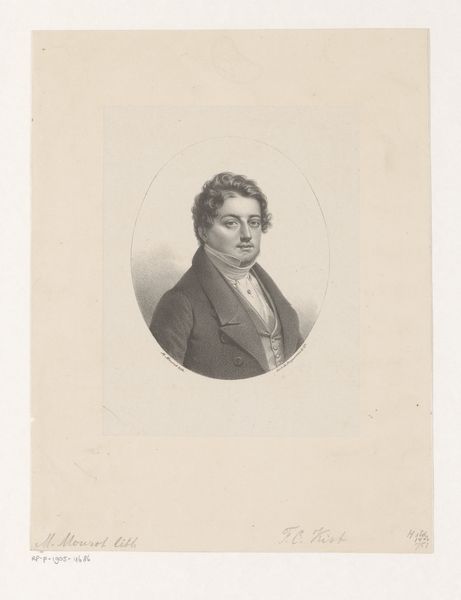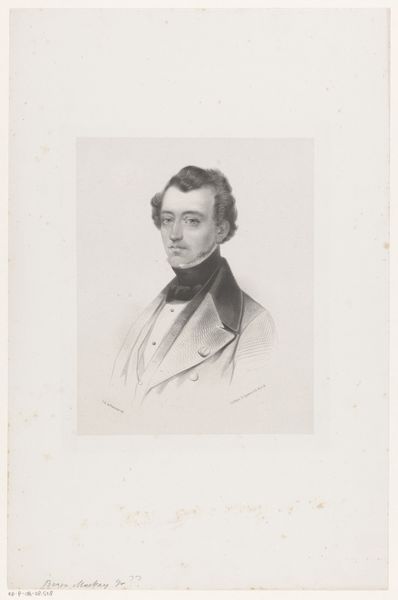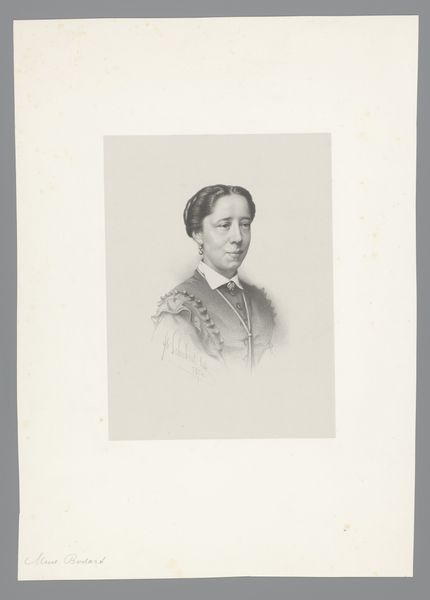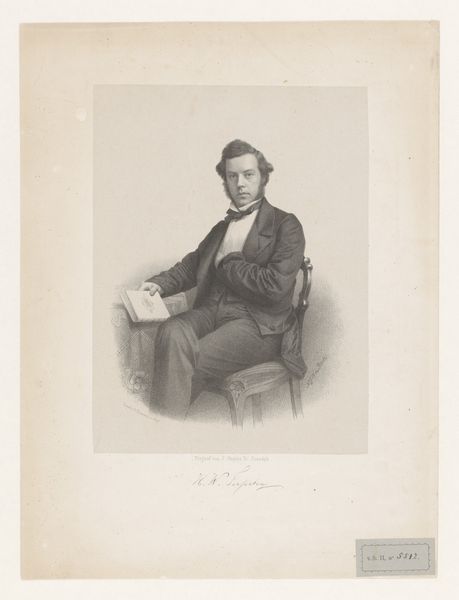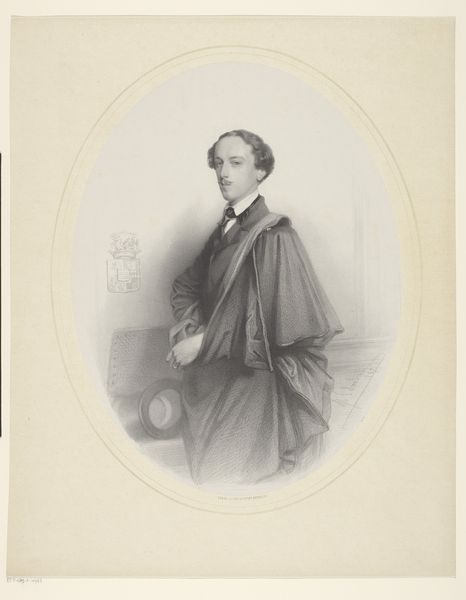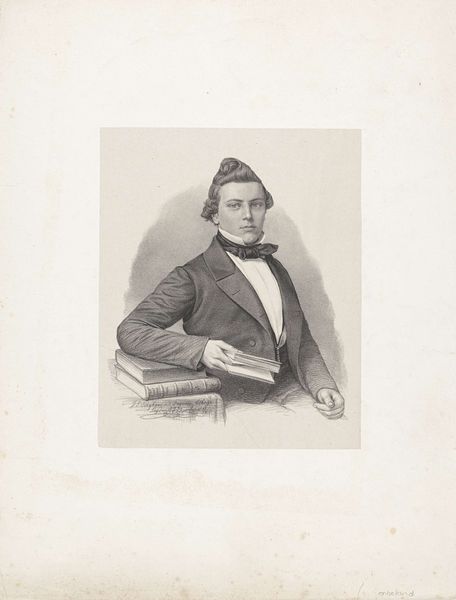
Portret van François Haverschmidt, bekend als Piet Paaltjens 1832 - 1873
0:00
0:00
Dimensions: height 270 mm, width 174 mm
Copyright: Rijks Museum: Open Domain
Curator: This is a pencil drawing entitled "Portret van François Haverschmidt, bekend als Piet Paaltjens," dating back to sometime between 1832 and 1873. The work's origins lie in the romantic period. Editor: The mood is undeniably melancholic, isn't it? The sitter’s downward gaze and arms crossed evoke a sense of internal conflict or quiet resignation. The pencil work feels quite delicate. Curator: Considering Haverschmidt was a Dutch minister and poet writing under the pseudonym Piet Paaltjens, and grappling with deep existential questions, it is fair to see the romantic roots reflected in his inner torment and spiritual life, made manifest in the figure’s almost ethereal form. Editor: Yes, and from a material standpoint, think about the pencil itself – a tool easily accessible, enabling widespread portraiture production beyond elite painters. The very accessibility influenced who got represented, and how. We see class structures disrupted even within these artistic renderings. Curator: Absolutely. The piece also begs the question about societal constraints and how identities are carefully constructed, even manipulated, depending on what social sphere is involved. How did these constructs affect both the sitter and the artist's self-expression? Editor: And how does the labor invested in even a "quick" pencil sketch inform its perceived value? Was this for mass consumption or commissioned? Those choices influence what materials are acquired, and even who has access to art at all. Curator: These are critical questions when analyzing an artwork. The themes explored here resonate with ongoing dialogues concerning mental health, societal roles, and the search for authenticity, allowing us a deeper understanding of marginalized experiences. Editor: Thinking about how different the experience of this period was from our own – the pace of life, access to visual information…it changes my perception, how deeply I interpret not just its visual weight but also how the materials used were shaped by his present condition.
Comments
No comments
Be the first to comment and join the conversation on the ultimate creative platform.
